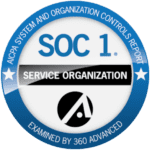The Ultimate Parcel & Freight Shipping Audit Guide
Navigating the complex world of parcel and freight shipping can present various challenges, especially when it comes to understanding and managing the costs.
One of the most effective strategies to ensure you’re not overpaying for shipping is by performing regular audits of your shipping invoices.
In this comprehensive guide, we’ll walk you through the steps to conduct a thorough parcel and freight audit, helping you save money and optimize your shipping processes.
Why Shipment Audits Matter
Shipping carriers can sometimes make mistakes or not apply contract terms correctly, leading to overcharges for shippers. With shipping costs being a significant part of operational expenses, conducting audits is essential in maximizing savings.
These audits can also help in identifying trends, carrier performance, and even billing accuracy.
Prepare Your Audit Toolkit
Before you start auditing, gather the necessary tools:
- Shipment Data: Collect shipment records including tracking numbers, delivery dates, shipping volume, and costs.
- Documentation: Secure a copy of your shipments’ bills of lading and signed delivery receipts to confirm delivery
- Carrier Contracts: Have a copy of your current shipping contracts for reference.
- Rate Sheets: Keep updated rate sheets for all your carriers.
- Auditing Software: If available, use specialized software that can automate parts of the auditing process.
The Four-Step Audit Process
Step 1: Collect Shipment Data
Begin by consolidating your shipment data from various sources. This can include:
- Invoices: Make sure to collect all invoices from your shipping carriers within the audit period. This step is crucial for thorough documentation and financial tracking.
- Bill of ladings: The bill of lading is the contract between the shipper and the carrier. It contains the shipper, consignee, the freight terms, commodities, weight, and freight class. This will be used to audit against what the invoice is charging.
- Delivery receipt / Proof of delivery: The delivery receipt or proof of delivery will confirm that the shipment has delivered.
- Confirmation Emails / Letters: It’s important to archive all correspondence that confirms shipment details and rates for every delivery. This practice ensures clarity and accuracy in your shipping records. –
- Internal Records: In addition to invoices and confirmation documents, include any additional internal logs that track shipments and costs. These internal records provide a comprehensive overview of your shipping operations and expenses.
Step 2: Verify the Accuracy of Invoices Against Contracts
Once you have all the data, it’s time to compare it against your carrier contracts and rate sheets. Look for discrepancies in:
- Billing Method: It’s crucial to double-check that the carriers are billing you correctly in alignment with the agreed-upon method, such as dimensional weight, to avoid any discrepancies.
- Surcharges and Fees: Take the time to ensure that all extra charges are not only accurate but also justified according to the terms outlined in the contract, maintaining transparency in financial transactions.
- Rate Changes: Conduct a thorough examination to confirm if any modifications in rates have been effectively communicated and correctly applied, ensuring accuracy in financial records.
Step 3: Understand the Context of Each Shipment
Conduct a detailed review of the context around each shipment. Check for:
- Service Level Agreements (SLA): It is crucial to confirm that shipments were delivered within the agreed-upon time frame specified in the Service Level Agreement (SLA).
- Address Corrections: It is important to meticulously review any corrections made by the carrier to ensure that they were indeed necessary and accurately billed to prevent any discrepancies.
- Accessorial Charges: Take the time to assess additional charges, such as those for services like residential delivery or inside pickup, to ensure that they align appropriately with the specific services rendered.
Step 4: Document and Follow Up on Findings
For every discrepancy found, document the details and reach out to the carrier. Here’s what to do:
- Document all discrepancies meticulously, including thorough supporting evidence and detailed descriptions.
- Initiate the claims process with the carrier by meticulously following their specific claim procedure step-by-step.
- Maintain consistent follow-up communication until all discrepancies are satisfactorily resolved, and the accurate credits are promptly applied to your account.
Best Practices and Tips
To perform a smooth and effective audit, remember these best practices:
- Regular Audits: It is crucial to conduct audits at regular intervals to meticulously check for billing accuracy, ensuring that financial transactions align with the services provided.
- Staff Training: In case you have a dedicated team, invest in thorough training sessions emphasizing the significance of precise billing practices. Encourage their active participation in the audit process to foster a culture of accountability and accuracy.
- Keep Records: Maintaining detailed records of your shipments and audit findings is vital for comprehensive analysis and reference in the future. These records serve as a valuable resource for tracking billing discrepancies and identifying areas for improvement.
- Build Relationships: Establishing and nurturing positive relationships with your carrier representatives is key. They play a pivotal role in addressing any billing issues that may arise, facilitating smoother operations and effective conflict resolution.
Advanced Strategies
For those looking to go the extra mile, consider these advanced strategies:
- When looking for Freight Audit Software, it’s beneficial to invest in comprehensive software solutions that not only provide advanced audit capabilities but also streamline and automate the audit processes, saving you time and effort.
- For businesses shipping at a high volume, exploring Contract Negotiation Services can be advantageous. These services specialize in not only auditing but also negotiating carrier contracts, ensuring that you are getting the best deals for your shipping needs.
- Utilize the insights gained from data analysis in your audits to create detailed reports and interactive dashboards. These analytics and reporting tools will help you gain a deeper understanding of your shipping processes, optimize your spending, and make informed decisions to enhance efficiency.
Final Thoughts
Auditing your parcel and freight invoices is a vital practice for businesses looking to control costs and optimize their logistics operations.
By following these steps and best practices, you will not only identify and rectify billing errors but also improve your understanding of your shipping agreements and carrier relationships.
Remember, the auditing process can be time-consuming, but the savings and operational improvements you’ll gain make it more than worthwhile. And you can always hire parcel auditing companies to do the job for you as it can save a lot of time and effort.
Stay vigilant, stay organized, and never hesitate to reach out and question charges that don’t seem right. Your bottom line and business operations will thank you.
About Us
Are you looking for an all-in-one solution for your transportation management and freight audits in one place, look no further than Hatfield & Associates.
We are one of the best supply chain management companies in Memphis, TN that works to reduce the transportation costs of our clients without compromising on quality or efficiency.
Our services include logistics support, freight pay and audits, supply chain optimization, and more. You can reach us at (901) 507-2615 or fill out our contact form to know more.




